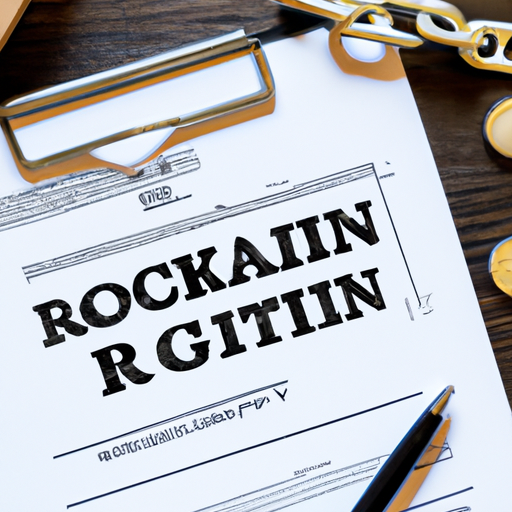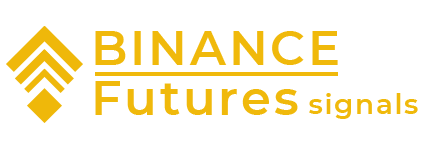I. Introduction to Digital Rights Management (DRM)
II. Understanding Blockchain Technology
III. Benefits of Using Blockchain for DRM
IV. Challenges and Future Implications of Blockchain-based DRM

Introduction to Digital Rights Management (DRM)
Hey there! Welcome to the wonderful world of Digital Rights Management (DRM). In this article, we’ll take a deep dive into the fascinating realm of DRM and explore its importance in the digital age. So, buckle up and get ready for an exciting journey!
DRM, in simple terms, refers to the technologies and techniques used to protect and manage digital content, such as music, movies, e-books, and software. It’s like a digital bouncer that ensures only authorized individuals can access and use the content.
Now, you might be wondering, why is DRM even necessary? Well, my friend, the internet has made it incredibly easy to copy and distribute digital content without permission. DRM acts as a shield, safeguarding the rights of content creators and copyright holders.
DRM systems typically employ encryption, licensing, and access control mechanisms to restrict unauthorized access, copying, and sharing of digital content. It’s like having a virtual bodyguard for your favorite songs and movies.
However, DRM has often been a subject of controversy. Some argue that it restricts user freedoms and limits fair use of digital content. That’s where blockchain technology comes into play!
But hold on, before we dive into the blockchain realm, let’s make sure we’re all on the same page about what blockchain actually is. If you’re already familiar with it, feel free to skip ahead to the next section.
Blockchain is a decentralized, distributed ledger technology that allows multiple parties to maintain a shared record of transactions without the need for a central authority. It’s like a digital ledger that’s transparent, secure, and virtually tamper-proof.
Now, you might be wondering, what does blockchain have to do with DRM? Well, my friend, blockchain can revolutionize the way DRM is implemented and managed. Let’s explore the benefits of using blockchain for DRM, shall we?
Understanding Blockchain Technology
So you’ve probably heard the term “blockchain” thrown around a lot lately, especially in the world of digital rights management (DRM). But what exactly is blockchain and why is it such a big deal? Well, my friend, buckle up because I’m about to take you on a wild ride through the world of blockchain technology.
At its core, blockchain is a decentralized digital ledger that records transactions across multiple computers. Think of it as a giant, tamper-proof spreadsheet that everyone can see and verify. Each transaction, or “block,” is added to the chain in a chronological order, creating a permanent and transparent record.
But what makes blockchain so special? One word: trust. Traditional DRM systems rely on centralized authorities to verify and enforce digital rights. This means you have to put your faith in these authorities to do their job and protect your rights. With blockchain, trust is distributed among all the participants in the network. No single entity has control over the entire system, making it more resistant to tampering and censorship.
Now, you might be wondering how blockchain actually works. Well, let me break it down for you. When a transaction occurs, it is grouped with other transactions into a block. But before this block can be added to the chain, it needs to be verified by the network. This verification process involves complex mathematical algorithms that ensure the validity of the transaction. Once the block is verified, it is added to the chain and becomes a permanent part of the record.
One of the key features of blockchain is its immutability. Once a block is added to the chain, it cannot be altered or deleted. This makes blockchain an ideal technology for DRM, as it provides a transparent and tamper-proof record of digital rights ownership and transactions.
But wait, there’s more! Blockchain also offers enhanced security and privacy. Since each transaction is recorded on multiple computers, it is extremely difficult for hackers to manipulate the data. Additionally, blockchain allows for pseudonymous transactions, meaning you can participate in the network without revealing your real identity.
So, what are the benefits of using blockchain for DRM? Well, for starters, it eliminates the need for centralized authorities, reducing the risk of corruption and abuse. It also provides a more efficient and cost-effective way of managing digital rights, as transactions can be executed directly between the parties involved, without the need for intermediaries.
However, it’s important to note that blockchain-based DRM is not without its challenges. Scalability, energy consumption, and regulatory concerns are just a few of the issues that need to be addressed. Additionally, the future implications of blockchain in the DRM landscape are still uncertain. Will it revolutionize the industry or fizzle out? Only time will tell.
So there you have it, a crash course in blockchain technology. Whether you’re a DRM enthusiast or just curious about the latest tech trends, understanding blockchain is essential in today’s digital age. It’s a game-changer that has the potential to transform the way we manage and protect our digital rights. So hop on the blockchain bandwagon and embrace the future!
III. Benefits of Using Blockchain for DRM
So, you’ve heard about this thing called blockchain, right? It’s been making waves in various industries, and now it’s even making its way into the world of digital rights management (DRM). But what exactly are the benefits of using blockchain for DRM? Let’s dive in and find out!
1. Enhanced Security
One of the biggest advantages of using blockchain for DRM is the enhanced security it offers. Traditional DRM systems rely on centralized servers, which can be vulnerable to hacks and data breaches. With blockchain, however, the information is distributed across a network of computers, making it much more difficult for hackers to tamper with or manipulate the data.
By using blockchain, DRM systems can ensure that only authorized users have access to digital content, preventing unauthorized sharing or piracy. Each transaction and interaction is recorded on the blockchain, creating a transparent and tamper-proof audit trail.
2. Decentralization and Peer-to-Peer Sharing
Blockchain technology allows for the decentralization of DRM systems, eliminating the need for intermediaries and creating a direct peer-to-peer sharing environment. This means that content creators can directly connect with consumers, bypassing traditional distribution channels and reducing costs.
By removing intermediaries, blockchain-based DRM systems can also ensure that content creators receive fair compensation for their work. Smart contracts, which are self-executing contracts with the terms of the agreement directly written into code, can be used to automate royalty payments and ensure that artists are paid promptly and accurately.
3. Transparency and Accountability
Another benefit of using blockchain for DRM is the transparency and accountability it brings to the table. The decentralized nature of blockchain means that every transaction and interaction is recorded and can be accessed by anyone on the network.
This transparency not only helps in preventing piracy and unauthorized sharing but also enables content creators to track the usage of their work and ensure that they are receiving fair compensation. It also provides a clear audit trail, making it easier to identify any potential copyright infringements.
4. Immutable and Permanent Records
Blockchain technology is known for its immutability, meaning that once a transaction is recorded on the blockchain, it cannot be altered or deleted. This feature is particularly useful in DRM systems, as it ensures that the ownership and licensing information of digital content remains intact and cannot be tampered with.
By leveraging blockchain’s permanence, DRM systems can provide a reliable and tamper-proof record of ownership, making it easier to enforce copyright laws and protect intellectual property rights.
5. Global Accessibility
Lastly, blockchain-based DRM systems have the potential to make digital content more accessible on a global scale. By removing geographical restrictions and intermediaries, blockchain allows for direct peer-to-peer sharing across borders.
This means that artists and content creators can reach a wider audience, while consumers can access a greater variety of content without being limited by regional restrictions. It opens up new opportunities for collaboration and creativity, fostering a more inclusive and interconnected digital ecosystem.
So, there you have it – the benefits of using blockchain for DRM. Enhanced security, decentralization, transparency, immutability, and global accessibility are just some of the advantages that blockchain brings to the table. As the technology continues to evolve, we can expect even more innovative solutions to emerge, revolutionizing the way we protect and distribute digital content.
Stay tuned for more exciting developments in the world of blockchain-based DRM!
IV. Challenges and Future Implications of Blockchain-based DRM
While blockchain technology offers several benefits for digital rights management (DRM), it is not without its challenges and future implications. Let’s take a closer look at some of these:
1. Scalability
One of the primary challenges of implementing blockchain-based DRM is scalability. As the number of users and transactions on a blockchain network increases, so does the complexity and size of the blockchain. This can result in slower transaction times and increased costs. To address this, developers need to find innovative ways to optimize blockchain networks for DRM purposes.
2. Interoperability
Interoperability is another significant challenge when it comes to blockchain-based DRM. Different industries and organizations may have their own blockchain networks, making it difficult to establish a unified system for managing digital rights. To overcome this challenge, industry standards and protocols need to be developed to ensure seamless integration and interoperability between different blockchain networks.
3. Privacy and Security
While blockchain technology itself is highly secure, the implementation of DRM on a blockchain introduces new privacy and security concerns. The transparent nature of blockchain can potentially expose sensitive information about users’ digital rights and transactions. It is crucial to strike a balance between transparency and privacy, ensuring that user data remains protected while still allowing for effective DRM.
4. Adoption and Education
Widespread adoption of blockchain-based DRM will require education and awareness among content creators, consumers, and regulatory bodies. Many people are still unfamiliar with blockchain technology and its potential applications in DRM. Educating stakeholders about the benefits and implications of blockchain-based DRM is essential for its successful implementation.
Future Implications
Looking ahead, blockchain-based DRM has the potential to revolutionize the way digital rights are managed. Here are some future implications to consider:
1. Decentralization and Empowerment
Blockchain-based DRM can empower content creators by allowing them to directly manage and monetize their digital assets. By removing intermediaries and implementing smart contracts, artists and creators can have greater control over their work, ensuring fair compensation and reducing piracy.
2. Global Accessibility
Blockchain-based DRM has the potential to make digital content more accessible globally. With a decentralized system, content can be securely distributed across borders, eliminating regional restrictions and enabling a more inclusive digital ecosystem.
3. Enhanced Transparency and Trust
Blockchain technology’s transparency and immutability can enhance trust between content creators, consumers, and other stakeholders. By providing a verifiable record of ownership and usage rights, blockchain-based DRM can reduce disputes and improve transparency in the digital content industry.
While blockchain-based DRM is still in its early stages, it holds immense promise for the future of digital rights management. As the technology evolves and the challenges are addressed, we can expect to see more innovative solutions that revolutionize the way we protect and manage digital content.
For the best crypto and forex signal providers, be sure to check out Sublimetraders.com. They offer top-notch signals and insights to help you make informed trading decisions.

